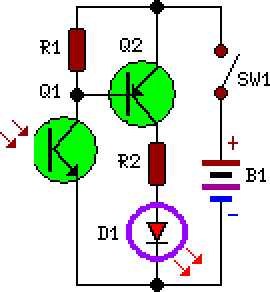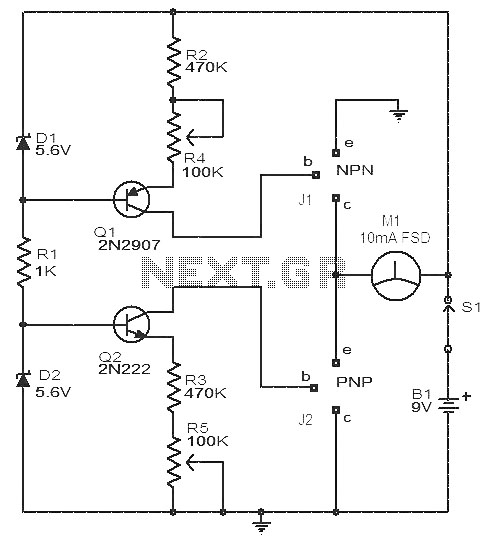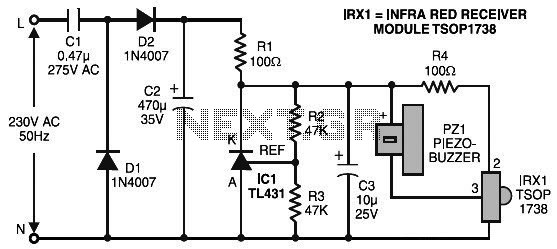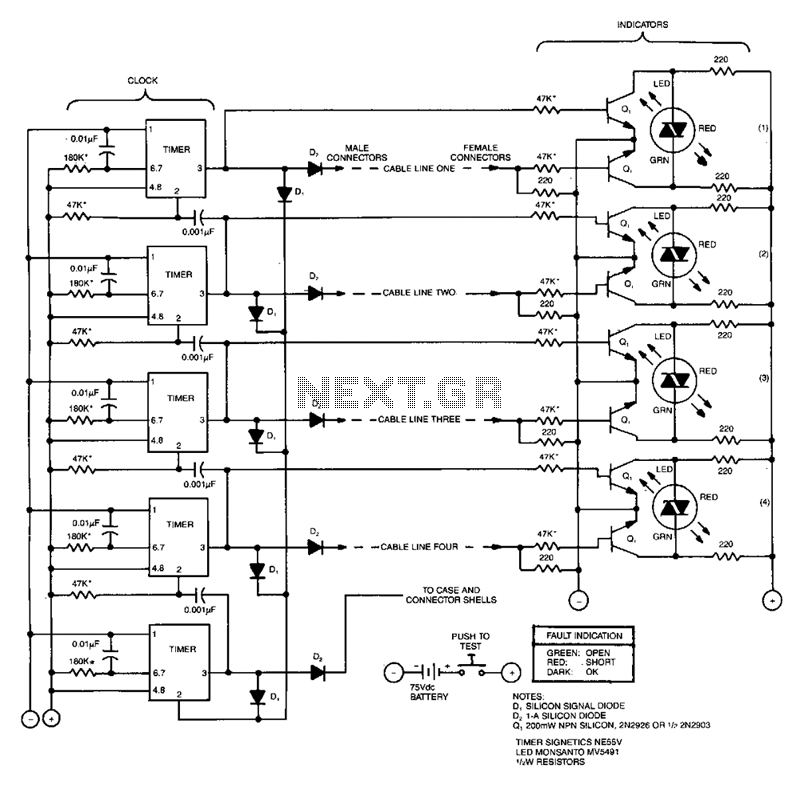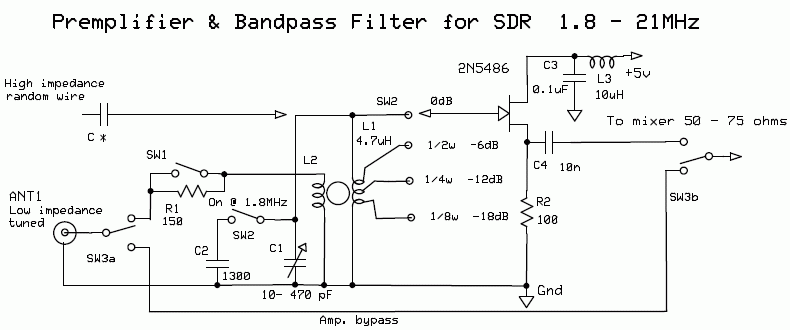
SDR Soundcard Tester
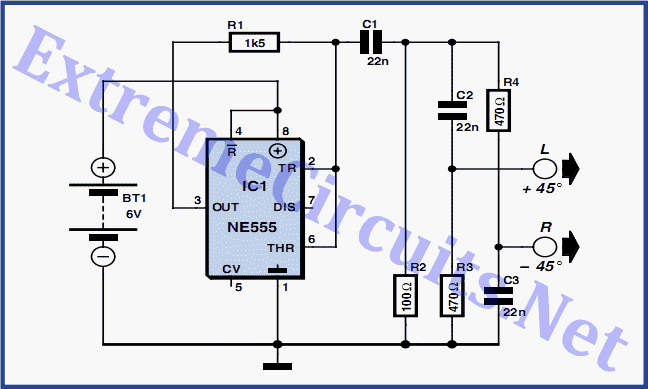
The key to successfully using a soundcard in digital signal processing or digital radio applications primarily depends on the characteristics of the soundcard itself. This is particularly true for Software Defined Radio (SDR) programs that transform a PC into a high-quality AM/SSB/CW receiver, provided the soundcard is compatible. To experiment with SDR effectively and minimize frustration, it is advisable to first verify the suitability of the PC soundcard. Three essential factors contribute to success: many laptops feature only a mono microphone input, which is often limited in bandwidth. In such cases, an external USB soundcard may be utilized. Most modern desktop PCs come with an integrated soundcard; however, some lack an anti-aliasing filter. Attempts to disable the integrated soundcard in favor of a superior one often lead to complications, making an external USB soundcard a viable alternative. To eliminate guesswork, testing the soundcard with a simple circuit is recommended. This approach assists in diagnosing potential issues and assessing the soundcard's compatibility with an SDR program. A square-wave generator, built around an NE555 timer IC, produces a 15 kHz output signal rich in harmonics. This signal can be used to evaluate the soundcard's capability to process harmonics at 30 kHz, 45 kHz, and beyond. An anti-aliasing filter at the soundcard's input should attenuate signals above 24 kHz. The frequency of the test generator can be adjusted within limits based on its supply voltage, allowing for a frequency range of 10 kHz to 20 kHz. The test circuit includes two RC networks at the output: a high-pass filter and a low-pass filter, serving as basic phase shifters. At the fundamental frequency of 15 kHz, these filters provide a total phase difference of 90 degrees, mirroring the typical output scenario of an SDR receiver utilizing an I-Q mixer, where signals share the same frequency but differ in phase. To test the soundcard, an SDR program must be operational on the PC alongside the circuit. Suitable software includes SDradio, which is available for download. When functioning correctly, the screen should display two signals: the desired signal at 15 kHz and a weaker image at the same frequency. Image suppression may not be optimal due to the test circuit's limited phase and amplitude accuracy. If both signals are at the same level, it indicates a potential issue with channel processing, likely suggesting the soundcard has a monophonic input. In cases where no anti-aliasing filter is present at the soundcard input, the spectrum may exhibit numerous additional lines, making it straightforward to correlate harmonics with alias frequencies. Results from using an I-Q receiver can be disappointing, with frequencies extending to 100 kHz being folded into the audible range, leading to undesirable audio artifacts such as bubbling, hissing, and whistling. Although it is theoretically possible to add an anti-aliasing filter to the receiver's output for use with soundcards lacking such a filter, achieving the necessary sharp cutoff and channel symmetry poses practical challenges. Typically, a soundcard's low-pass filter is set at 24 kHz, with significant attenuation (approximately 60 dB) occurring by 27 kHz. This level of performance is feasible with digital filters; however, creating an adjustable analog circuit to achieve similar results would be excessively complex, undermining the simplicity advantages offered by SDR receiver technology.
To implement this testing procedure, a straightforward circuit can be constructed around the NE555 timer IC configured in astable mode, generating a square wave output. The output frequency can be adjusted via a variable resistor, allowing the user to explore the frequency range from 10 kHz to 20 kHz. The circuit's output is then connected to the soundcard input, while an SDR software application is executed on the PC. The software will visualize the frequency spectrum, providing insights into the soundcard's performance. The presence of harmonics at 30 kHz and 45 kHz can be monitored to assess the soundcard's ability to handle higher frequencies without distortion. The inclusion of RC networks at the output enables phase shifting, crucial for testing the I-Q processing capabilities of the soundcard. This setup not only facilitates the evaluation of the soundcard's specifications but also serves as a practical learning tool for understanding digital signal processing in the context of SDR applications.The key to using a soundcard successfully in digital signal processing or digital radio applications lies principally in the characteristics of the soundcard itself. This applies in particular to SDR (software de ¬ ned radio) programs that turn your PC into a top-class AM/SSB/CW receiver, assuming your soundcard cooperates.
If you want to experim ent with SDR and avoid a lot of frustration, it is worth checking ¬ rst whether the PC soundcard you plan to use is suitable. There are three essential elements to success: Many laptops have only a mono microphone input, sometimes also rather limited in bandwidth.
In this case it may be possible to use an external USB soundcard. Most desktop PCs these days have an internal integrated soundcard, although some of these do not feature an anti-aliasing ¬ lter. Attempts to disable the integrated soundcard and replace it with a better one often meet with failure; again, an external USB soundcard is a possible solution.
To avoid guesswork, the best way to proceed is to test the soundcard using this very small circuit. This will help to diagnose any problems and will help determine whether the card is suitable for use with an SDR program. Figure 1 shows a simple square-wave generator built around an NE555 timer IC. At the output is a 15 kHz signal rich in higher harmonics. Using this we can determine whether or not the soundcard can process the harmonics at 30 kHz, 45 kHz and so on.
An anti-aliasing filter at the soundcard input should attenuate all signals above 24 kHz. The frequency of the test generator is, within limits, dependent on its supply voltage. Using an adjustable power supply, a frequency range from 10 kHz to 20 kHz can therefore be covered. There are two RC networks at the output of the test circuit, a high-pass filter and a low-pass filter, acting as simple phase shifters. At the basic frequency of 15 kHz these provide a total phase difference of 90 degrees, corresponding exactly to the typical situation at the output of an SDR receiver circuit using an I-Q mixer: signals at the same frequency but differing in phase.
To test the soundcard we need an SDR program running on the PC as well as the circuit of Figure 1. Suitable software includes SDradio (available for download from When things are running correctly, the screen should display just two signals: the wanted signal at 15 kHz and a weaker image at 15 kHz (Figure 2). Suppression of the image may not be particularly good as the test circuit does not have very high phase and amplitude accuracy.
If, however, the signals have the same level, there is a problem in the processing of the two channels: it is probable that the soundcard only has a monophonic input. If there is no anti-aliasing filter at the input of the soundcard the spectrum will show a large number of extra lines (Figure 3): it is easy to work out which harmonic corresponds to which alias frequency.
The results obtained using an I-Q receiver were grim: frequencies all the way out to 100 kHz were wrapped into the audible range, resulting in bubbling, hissing and whistling. In theory it would be possible to add an anti-aliasing filter to the output of the receiver to allow use with soundcards that are not equipped with such a filter.
In practice, however, it is not easy to achieve the required sharp cutoff and symmetry between the two channels. A typical soundcard has a low pass filter set at 24 kHz which by 27 kHz is already attenuating the signal by some 60 dB.
This is only practical using digital ¬ lters; an adjustable analogue circuit to achieve this performance would be so complex that the simplicity benefits of SDR receiver technology would entirely evaporate. 🔗 External reference
To implement this testing procedure, a straightforward circuit can be constructed around the NE555 timer IC configured in astable mode, generating a square wave output. The output frequency can be adjusted via a variable resistor, allowing the user to explore the frequency range from 10 kHz to 20 kHz. The circuit's output is then connected to the soundcard input, while an SDR software application is executed on the PC. The software will visualize the frequency spectrum, providing insights into the soundcard's performance. The presence of harmonics at 30 kHz and 45 kHz can be monitored to assess the soundcard's ability to handle higher frequencies without distortion. The inclusion of RC networks at the output enables phase shifting, crucial for testing the I-Q processing capabilities of the soundcard. This setup not only facilitates the evaluation of the soundcard's specifications but also serves as a practical learning tool for understanding digital signal processing in the context of SDR applications.The key to using a soundcard successfully in digital signal processing or digital radio applications lies principally in the characteristics of the soundcard itself. This applies in particular to SDR (software de ¬ ned radio) programs that turn your PC into a top-class AM/SSB/CW receiver, assuming your soundcard cooperates.
If you want to experim ent with SDR and avoid a lot of frustration, it is worth checking ¬ rst whether the PC soundcard you plan to use is suitable. There are three essential elements to success: Many laptops have only a mono microphone input, sometimes also rather limited in bandwidth.
In this case it may be possible to use an external USB soundcard. Most desktop PCs these days have an internal integrated soundcard, although some of these do not feature an anti-aliasing ¬ lter. Attempts to disable the integrated soundcard and replace it with a better one often meet with failure; again, an external USB soundcard is a possible solution.
To avoid guesswork, the best way to proceed is to test the soundcard using this very small circuit. This will help to diagnose any problems and will help determine whether the card is suitable for use with an SDR program. Figure 1 shows a simple square-wave generator built around an NE555 timer IC. At the output is a 15 kHz signal rich in higher harmonics. Using this we can determine whether or not the soundcard can process the harmonics at 30 kHz, 45 kHz and so on.
An anti-aliasing filter at the soundcard input should attenuate all signals above 24 kHz. The frequency of the test generator is, within limits, dependent on its supply voltage. Using an adjustable power supply, a frequency range from 10 kHz to 20 kHz can therefore be covered. There are two RC networks at the output of the test circuit, a high-pass filter and a low-pass filter, acting as simple phase shifters. At the basic frequency of 15 kHz these provide a total phase difference of 90 degrees, corresponding exactly to the typical situation at the output of an SDR receiver circuit using an I-Q mixer: signals at the same frequency but differing in phase.
To test the soundcard we need an SDR program running on the PC as well as the circuit of Figure 1. Suitable software includes SDradio (available for download from When things are running correctly, the screen should display just two signals: the wanted signal at 15 kHz and a weaker image at 15 kHz (Figure 2). Suppression of the image may not be particularly good as the test circuit does not have very high phase and amplitude accuracy.
If, however, the signals have the same level, there is a problem in the processing of the two channels: it is probable that the soundcard only has a monophonic input. If there is no anti-aliasing filter at the input of the soundcard the spectrum will show a large number of extra lines (Figure 3): it is easy to work out which harmonic corresponds to which alias frequency.
The results obtained using an I-Q receiver were grim: frequencies all the way out to 100 kHz were wrapped into the audible range, resulting in bubbling, hissing and whistling. In theory it would be possible to add an anti-aliasing filter to the output of the receiver to allow use with soundcards that are not equipped with such a filter.
In practice, however, it is not easy to achieve the required sharp cutoff and symmetry between the two channels. A typical soundcard has a low pass filter set at 24 kHz which by 27 kHz is already attenuating the signal by some 60 dB.
This is only practical using digital ¬ lters; an adjustable analogue circuit to achieve this performance would be so complex that the simplicity benefits of SDR receiver technology would entirely evaporate. 🔗 External reference
